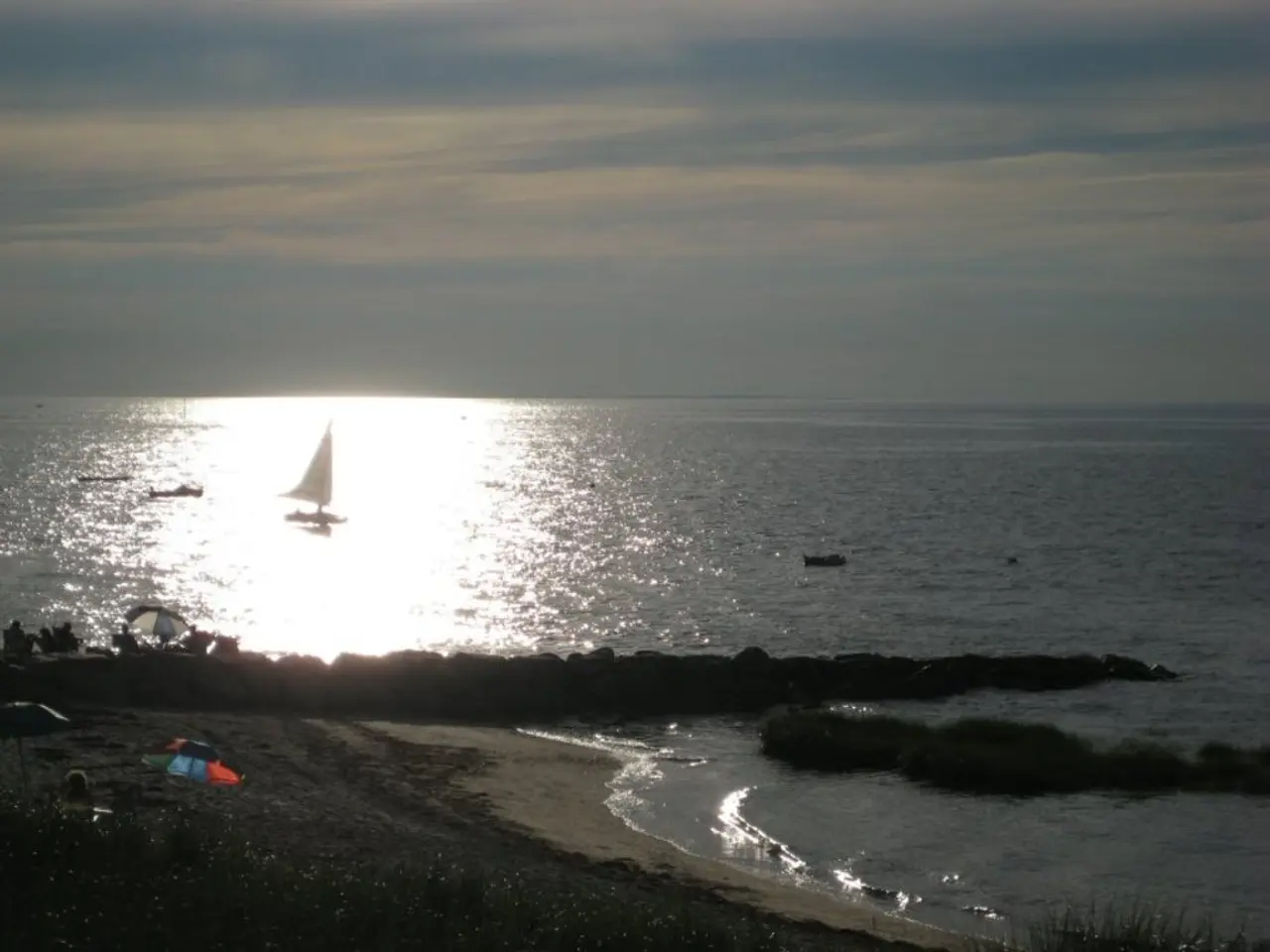The enigma of foot remains washing up along the Pacific Northwest coastline finally unraveled by scientific investigation
In the waters surrounding Vancouver Island, a peculiar phenomenon has been unfolding since 2007. Over the past 12 years, at least 21 detached human feet, most of them enclosed in sneakers, have washed ashore in the Salish Sea area[1]. This intriguing discovery has sparked public fear and media speculation, with theories ranging from serial killers to aliens. However, the scientific explanation for this phenomenon is far less sinister.
The sneakers act as flotation devices, preserving the feet and allowing them to travel long distances via ocean currents before washing ashore. This rare occurrence is the result of natural post-mortem processes combined with the unique physical properties of modern footwear and the Salish Sea's currents[1].
When a person drowns or dies at sea, the body decomposes underwater, and the feet—protected by buoyant sneakers—can detach and float to shore separately[1]. The feet's journey is influenced by the Salish Sea's geography and currents, determining where they eventually land.
E.R. Donoghue's 1977 study, titled "Human Body Buoyancy: A Study of 98 Men," found that cadavers are overall more likely to sink than to float, and people who drown are the most likely to sink[1]. This suggests that the feet found in the Salish Sea were likely those of individuals who drowned.
Despite the media hype, none of the Canadian cases so far have been found to result from homicide[1]. In some cases, the cause of death was determined to be accidental or suicide, while in other cases, the circumstances were hazier.
Forensic anthropologist Laura Yazedjian, who works as a human identification specialist for the British Columbia Coroners Service, has been instrumental in linking the feet to missing persons. Through DNA analysis, she has linked nine of the feet to seven missing people[1]. However, five of the feet in British Columbia remain unidentified.
Yazedjian warns against referring to the feet as "severed" as there were no cut marks found on the bones[1]. The feet set sail sans bodies due to the decomposition process underwater, but the specific reasons for this are still under investigation.
Modern sneakers, made in the last decade or so, are likely to float due to gas-filled pockets in the soles and lighter, more airy foams. This buoyancy property, combined with the unique conditions of the Salish Sea, has led to the investigation of otherwise cold cases.
The mystery of the floating feet may not make for a thrilling Netflix documentary, but it provides valuable insights into forensic science. It serves as a reminder that even in the most unusual circumstances, science is required to solve mysteries, rather than criminal or psychic investigation.
In the end, the floating sneaker-encased feet in the Salish Sea are a testament to the power of nature and the wonders it holds. Despite the initial fear and speculation, the truth behind this phenomenon is a fascinating blend of science, geography, and modern footwear technology.
- The mystery of the floating feet in the Salish Sea offers significant insights into forensic science, emphasizing the importance of scientific investigation in solving even the most unusual circumstances.
- The unique property of modern sneakers, characterized by gas-filled pockets and lightweight foams, contributes to the sneakers acting as flotation devices, allowing human feet to travel long distances via ocean currents before washing ashore.
- The journey of the feet in the Salish Sea is influenced by the area's geography and currents, with the final destination being determined by these natural factors.
- Through DNA analysis, forensic anthropologist Laura Yazedjian has linked nine of the floating feet to seven missing persons, providing a potential resolution to otherwise cold cases.
- Despite the initial fear and media speculation, the scientific explanation for the floating feet phenomenon in the Salish Sea is far less sinister, involving natural processes combined with the unique properties of modern footwear and the Salish Sea's currents.




